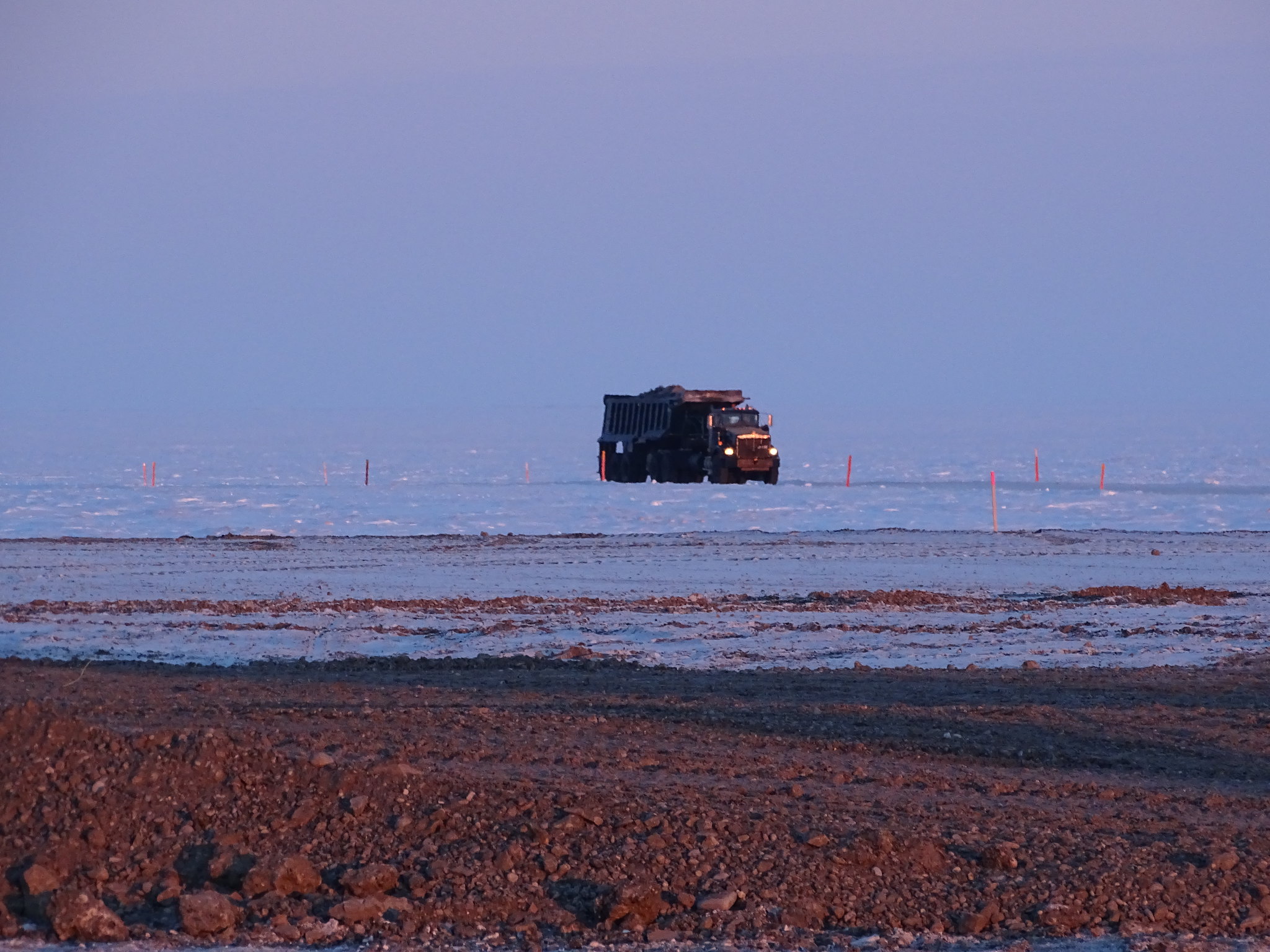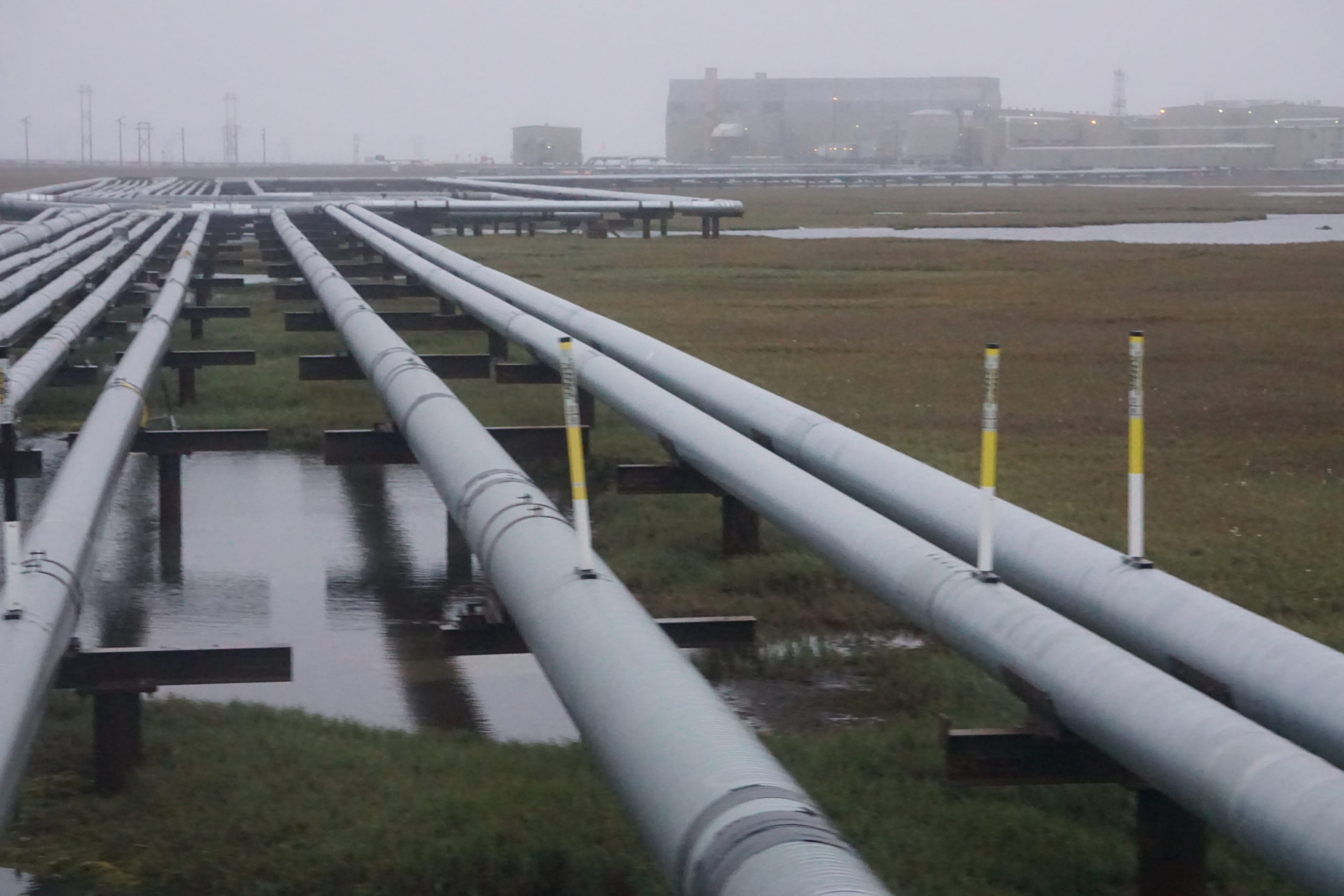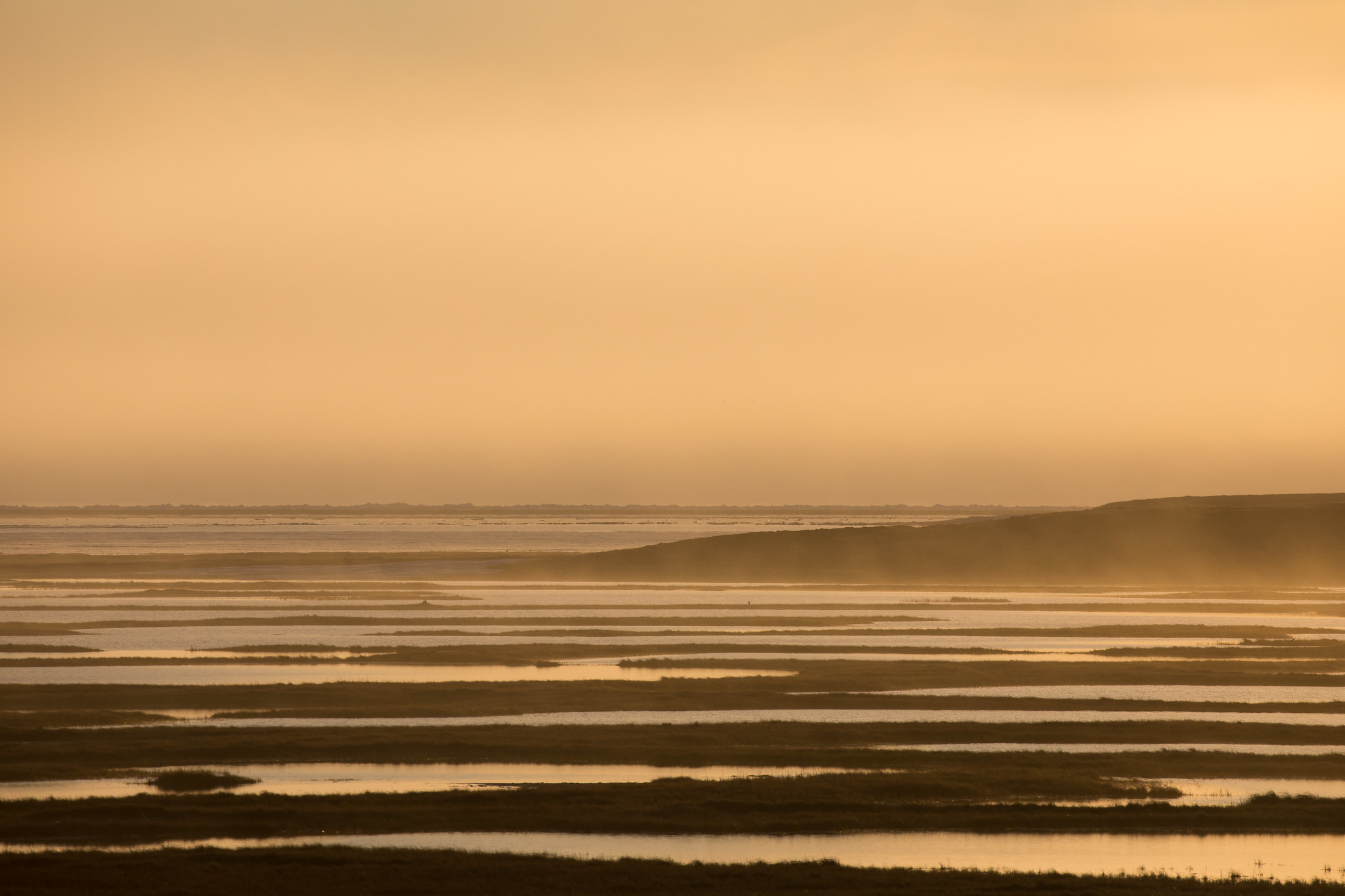Winter oil work continues on Alaska’s North Slope, despite uncertainty about major projects
Efforts to drill in Alaska's Arctic National Wildlife Refuge and at the massive new Willow prospect are on hold, but oil companies are at work elsewhere.

With major oil projects stalled by legal problems, oil companies operating on Alaska’s North Slope are pursuing plans for alternative developments this winter.
ConocoPhillips, the state’s top producer, has plenty of projects ongoing while it waits for a court-ordered environmental review of its massive Willow project on the western North Slope, company officials have said.
The most notable project this winter is the impending startup of ConocoPhillips’ GMT-2, the newest oil field within the Greater Mooses Tooth unit located in the National Petroleum Reserve of Alaska.
ConocoPhillips has completed three construction seasons, which included construction of a gravel road and 14-acre pad, delivery of nearly 50 miles of pipeline and installation of 11 process modules, said company spokeswoman Rebecca Boys. The production facilities are “now ready for startup” by the end of the year, she said by email.
GMT-2 is expected to produce 30,000 barrels a day at its production peak. Upon startup, it will be the westernmost producing field on the North Slope.
Willow, which is even farther west than GMT-2, remains on track despite the August court-mandated scrapping of its federal approvals, a top Alaska ConocoPhillips official said at an online conference last month.
“ConocoPhillips remains committed to Willow, working through the legal process and more specifically, working through the issues that were identified through the district court ruling,” Vincent Lelarge, manager for North Slope asset development, said at the Resource Development Council for Alaska’s annual conference, held Nov. 17.
Willow is believed to hold about 600 million barrels of recoverable oil and could produce 160,000 barrels a day, according to company estimates.
[Alaska agency commits to more spending on Arctic refuge oil plans]
Hilcorp, the Texas-based independent that acquired all of BP Plc’s Alaska assets in deals completed in 2014 and 2020, also has plans for winter activities.
The company, known for revitalizing old fields, has had notable success at Prudhoe Bay, the supergiant field that anchors the North Slope basin, a company official said at the RDC conference.
Since it took over operations at Prudhoe in mid-2020, Hilcorp has arrested the field’s production decline, said Jill Fisk, a Prudhoe Bay team leader. That decline was about 4 percent a year from 2016 until Hilcorp’s takeover last year, she said at the conference.
“This hasn’t been accomplished by drilling new wells or executing big capital projects to add this capacity to the field,” Fisk said. Rather, it is the product of hundreds of projects executed across the field, she said. “We’ve done this by getting more wells online, not by drilling new ones but by repairing and returning to production the ones we have,” she said.
To help boost production and efficiency, Hilcorp has also “focused on returning out of service equipment into service that in some cases hasn’t been in service for a decade or more,” she said.
Hilcorp has already drilled its first new well at Prudhoe, which was completed in October, and has plans to do more in-field development in 2022, she said. Hilcorp also plans to extend to a portion of Prudhoe a polymer-injection technique that has been successful at increasing recovery at the Milne Point field, Fisk said.

Not all has been smooth for Hilcorp at Prudhoe. The Alaska Oil and Gas Conservation Commission last month issued an enforcement action for a safety violation at the field.
Hilcorp paid a $10,000 fine and has been ordered by the AOGCC to submit a written report explaining a “defeated” safety valve system intended to prevent oil spills. The report must also spell out Hilcorp’s plans for preventing future recurrences of this safety violation, the AOGCC order said.
It was the first AOGCC enforcement order against Hilcorp for a safety violation at Prudhoe Bay, though was among several issued over recent years against the company for violations at other fields. The most serious incident was in 2015 when three workers at Milne Point were seriously endangered by a flood of nitrogen gas; Hilcorp in 2017 was fined $200,000 for the safety violations.
ANWR on hold
Any potential development activities in the Arctic National Wildlife Refuge are on hold while the Bureau of Land Management works through a supplemental environmental impact statement launched by Interior Secretary Deb Haaland’s June order mandating a new review of the leasing program.
That supplemental EIS is not expected to be completed until the summer of 2023, according to the BLM timetable. The BLM completed the scoping process meant to identify areas of study in the process and released its scoping report on Dec. 1.
The Alaska Industrial Development and Export Authority, the state-owned institution that was the main bidder in the Trump administration’s Jan. 6 lease sale, is continuing its investment in the seven leases it acquired in, despite the new delays.
At a Dec. 1 meeting, AIDEA’s board committed to spend money in 2022 on developing those leases including an estimated $3.6 million in second-year fees to hold the leases. AIDEA executive director Alan Weitzner said at the board meeting that the North Slope Borough, the government for the northernmost region in Alaska, and the Arctic Slope Regional Corp., the for-profit regional corporation owned by Inupiat people of the region, are planning to join as supporting plaintiffs in the lawsuit AIDEA filed on Nov. 4 against the Biden administration over alleged interference in ANWR development.
AIDEA officials have argued that there is no justification for Interior to do a supplemental environmental impact statement on ANWR oil development.
Interior “has failed to articulate any basis for reversing its prior finding that the Leasing Program environmental review was fully compliant with the law,” AIDEA’s lawsuit argued.

Most of the substantive comments received in the scoping process argued the contrary, however.
Among the criticisms of the Trump administration’s leasing process was a lack of more protective alternatives, including a no-action alternative.
Several commenters faulted the BLM for failing to properly consider climate-change impacts. And several criticized the leasing program’s stipulations as ineffective for environmental protection. For example, according to the Canadian Parks and Wilderness Society’s Yukon chapter, the BLM using a flawed interpretation of the 2,000-acre surface occupancy limit, allowing different 2,000-acre sections to be disturbed sequentially with no time for the long recovery needed for tundra vegetation.
Matthew Sturm, a University of Alaska Fairbanks expert on Arctic snow, said in his comments that there is a “pressing need” for the supplemental EIS to evaluate impacts of seismic surveys and oil operations on the ground given that the refuge coastal plain has snow conditions that are vastly different from those of the rest of the North Slope.
Heavy snow could slow tundra travel
Outside of the refuge, the North Slope this year received exceptionally heavy early snows this year — but that does not translate to early permission for industrial travel on the tundra. In fact, thick layers of snow arriving early can trap warmth in the soil, delaying freeze needed to support industrial vehicles, the Alaska Department of Natural Resources has warned in its tundra-travel notices.
Because of the “exceptional snow conditions,” the department’s Division of Mining, Land and Water “strongly recommends that any operator planning to construct snow and ice roads begin pre-packing operations as soon as possible. This year’s deep snow may insulate the tundra, slowing freeze-up, which can push back the travel opening date. Pre-packing will help drive temperatures down to acceptable levels and help stabilize the snowpack to prevent a blow from moving the snow out of unit,” the division said in a Dec. 7 notice.
Scientists have known for years that thick layers of snow, through their insulating qualities, can keep tundra soils warm. On the North Slope specifically, earlier snow generally translated to delay in freeze of the permafrost active layer, according to one study published in 2019 in The Cryosphere.